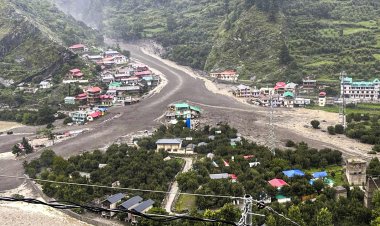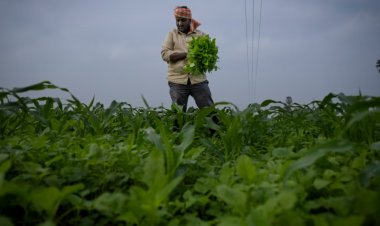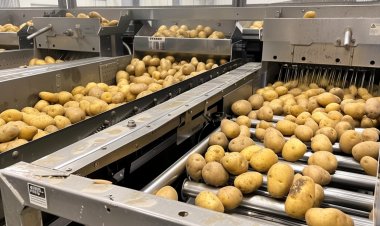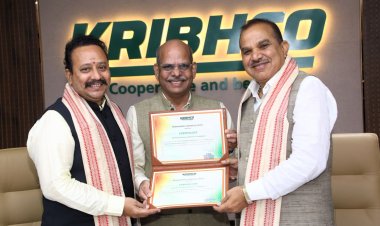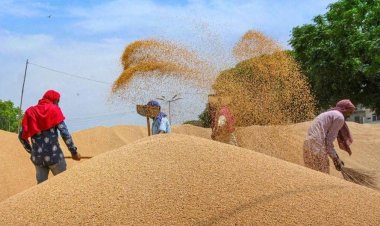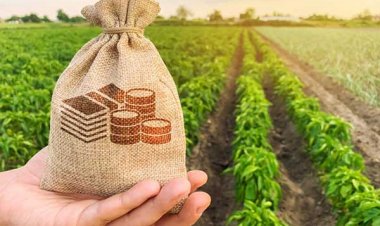Why sugarcane and sugar industry is evergreen in UP
The Mulayam, Mayawati and Yogi governments have a stake in the success of the sugarcane and sugar industry in the state. A major part of the state that starts from Saharanpur and goes through the Upper Doab, Rohilkhand and Terai up to Deoria in the east, is very suitable for cane production.

It is next to impossible to separate sugarcane from politics in Uttar Pradesh (UP). This has two reasons. One, the sugarcane and sugar industry is like the lifeline for the economic activities of the state. More than 40 lakh farmers are directly associated with it. It is also the largest industry in the state. The state has been India’s top producer of sugar for the last five seasons. Besides being the largest ethanol producer, it is the first state in the country to achieve a 10 per cent blending in petrol. What is interesting is that all this has happened in less than two decades along with the politics centred on the cane and sugar industry. Three different political parties — Samajwadi Party (SP), Bahujan Samaj Party (BSP) and the present Bharatiya Janata Party (BJP) — can stake their claims for this achievement and cash in on it. The second reason is that such a large number of people are associated with this industry that it cannot be politically ignored.
It began with the Mulayam Singh Yadav-led SP government that came to power in 2003. It came up in 2004 with the Sugar Industry Promotion Policy for investment in the sugar industry. UP’s sugar mills put together could then crush 4,00,000 tonnes of cane per day (tcd). Several new sugar mills were established and the crushing capacity of old sugar mills was increased due to this policy. By 2006-07, the aggregate crushing capacity had crossed 700,000 tcd and the number of mills, too, had increased substantially. The state’s 120 sugar factories today have a combined crushing capacity of 7,87,275 tcd. In fact, if we have to single out one particular government whose tenure proved to be the most significant for the establishment of and investment in sugar mills, it is the one when Mulayam was the chief minister.
Next, Mayawati came to power in 2007. Her government reduced the incentives that the sugar mills got under this promotion policy. But the increase in the State Advisory Price (SAP) of sugarcane was the maximum during Mayawati’s tenure. Her five-year tenure witnessed a total increase of Rs 120 per quintal. Mayawati kept the sugar industry at arm’s length and adopted a strict stance. She stopped the import of raw sugar in the state in order to maintain better prices. Besides, her government was strict on the issue of timely payments by the sugar mills to the cane farmers.
It is also true, however, that the issues of cane and sugar that take the centre stage in the state politics did not bring Mulayam Singh, who had established the largest number of sugar mills, back to the throne. Mayawati, who brought about the maximum increase in cane SAP, was not voted back to power either.
During the Akhilesh Yadav-led SP government that came to power after Mayawati, the troubles of the sugar industry and the cane farmers aggravated because there was a steep fall in sugar prices in the domestic and international markets during that period. Despite this, there was an increase of Rs 65 per quintal during Akhilesh’s tenure and the state government made direct payments of Rs 3,000 crore to the cane farmers in order to help the industry. However, the cane SAP remained on a freeze for three years.
The third major transformation in the state for the sugar industry and cane farmers has come about during the tenure of the current Yogi Adityanath government. There have been two important developments. One, there has been a massive increase in the productivity of sugarcane as the area under cultivation for CO-0238, the new cane variety, has fast gone up. Two, the recovery of sugar has also increased by 2-3 per cent. The cane farmers benefited from higher productivity and the sugar mills from higher recovery. But the farmers had to be disappointed on the SAP issue during this period because the SAP increased only by a total of Rs 35 per quintal, on two occasions, during five years. It remained on a freeze for three years.
The current government should be credited for a major achievement — ethanol production gathering pace. The financial incentives given by the Central government to implement the ethanol blending policy and the speeding up of the requisite process for the approval of establishing distilleries are the reasons behind this.
The total ethanol output stands at 107.21 crore litres in UP at present. In 2016-17, this figure stood at 43.25 crore litres. In other words, the output has more than doubled in 2020-21. The number of distilleries that produce ethanol in the state, too, has risen from 44 to 75 during this period. The sugar industry in the state has a target of supplying 160 crore litres of ethanol to the oil marketing companies (OMCs) in the current ethanol season (December 2021 to November 2022).
Thus, three governments have a stake in the success of the cane and sugar industry in the state. Irrespective of what a section of the environmentalists says, the truth is that a major part of the state that starts from Saharanpur and goes through the Upper Doab, Rohilkhand and Terai up to Deoria in the east, is very suitable for cane production. There is water, there is the climate that suits sugarcane production and now there is also a network of the most efficient plants of the country for its processing. More than 40 lakh cane farmers here produce more than 20 crore tonnes of cane annually. A similar number of labourers work with these cane farmers. About 1.5 lakh workers and labourers are employed in the sugar industry, which is the largest industry in the state. Lakhs of people work in the gur and khandsari industry and earn their living. Industries related to the by-products of sugar and other allied ones also employ a number of people. You may well get an idea of how a major part of the 24 crore population of UP earn their livelihood from the cane and sugar industry.
UP, which is most important for the country’s politics, is going for Assembly elections and the first phase of polls will be held on February 10. The results that come on March 10 after seven phases of polls will decide who will form the next government. But this is certain that sugarcane was at the centre of policies of every government and will continue to be so. This is the reason why sugarcane finds a mention in the promises and achievements of everyone — from Chief Minister Yogi Adityanath to Prime Minister Narendra Modi to the vigorously campaigning Union Home Minister Amit Shah. Also, Akhilesh Yadav, the president of the main opposition SP and the contender for the new government in the state, is leaving no stone unturned to woo the cane farmers. For the success of Jayant Chaudhary, the president of SP’s ally Rashtriya Lok Dal (RLD), it is the sugarcane region that is the most important because it is the main region of influence for his party.
Irrespective of which party forms the government and who becomes the chief minister, the current situation of sugar production in the state has the potential to bring better results for them. The Union government has made the policy of taking the level of ethanol blending to 15 per cent. It is UP that can contribute the maximum to this supply. But where the farmer stands in the entire arithmetic and what sort of balance is struck between the interests of the farmers and those of the industry, will also work as the balancing factor for government and politics.
It is not only about sugar, electricity and ethanol. Sugar production will not be necessary, thanks to the policy of producing ethanol directly from sugarcane juice. If on the one hand, the fertilizer potash is found in the waste generated after making ethanol, on the other hand, the press mud that comes out while making sugar is compressed to produce bio-CNG. That is to say, the number of products obtained from a single raw material, viz. sugarcane, is going on increasing. Hence UP may be transformed into mini-Brazil. But if the farmers are also made to reap the dividends, we may also get to see better political results.



 Join the RuralVoice whatsapp group
Join the RuralVoice whatsapp group

















